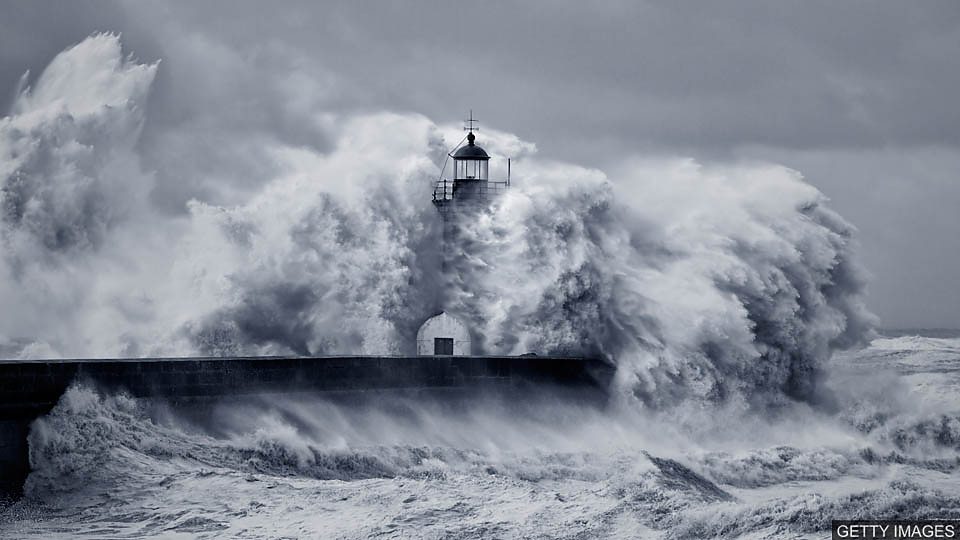“超级巨浪” 是时而惊扰宁静海面上可能出现的惊涛骇浪,这类波浪出现的频率有所下降,但是强度却有所增加。这是研究人员在分析了美国西海岸浮标 20 年来的数据后得出的观测结果。
文字稿
Rogue waves can reach more than 30 metres high and at their worst can sink ships and sweep people out to sea.
“超级巨浪” 最高可达 30 多米,最猛烈的海浪可击沉船只、把船员卷入海中。
To better understand how and when they might strike, scientists looked at 20 years of data collected along the west coast of America. Over this period, the frequency of these waves decreased slightly. But when they did appear, they were growing in size.
为深入了解它们突然出现的原理和时间,科学家们对从美国西海岸采集到的 20 年来的数据进行了研究。在此期间,这类海浪出现的频率略有下降。但每次出现时,波浪的大小在逐渐增长。
This was especially marked during the winter, where the waves intensified, increasing in height and occurring more often in calmer seas. These trends may be local to this area but the researchers now want to find out what’s driving these variations and to see how they're related to climate change.
这一现象在冬天尤为明显:海浪的威力加强、高度上升,在更平静的海况中出现的频次也有所增加。上述趋势可能只是该地区的局部现象,但现在研究人员们想找出推动这些变化的原因,并弄清超级巨浪与气候变化之间的联系。
The waves pose a serious risk for the global shipping industry and scientists say more data is now needed from around the rest of the world to help predict when and where these waves could strike.
这类海浪对全球海运行业构成严重的威胁,科学家们表示,现在他们需要世界其它地区提供更多数据,以帮助预测巨浪侵袭的时间及地点。
1. 词汇
rogue waves 超级巨浪
sink 击沉
sweep (海浪)卷走
strike 突然出现、突然侵袭
frequency 频率、频次
marked 以…为特征
intensified 加剧了、加强了
driving 推动、驱使
climate change 气候变化
pose 构成、带来
predict 预测
2. 阅读理解:请在读完上文后,回答下列问题 。
1. True or false? Although rogue waves are growing in size, they don’t happen quite as often.
2. Which part of the world did this research take place in?
3. How much do scientists think climate change is affecting the size and intensity of rogue waves in the winter?
4. What could help scientists work out where future rogue waves might strike?
3. 答案
1. True or false? Although rogue waves are growing in size, they don’t happen quite as often.
True. Data collected over 20 years found the frequency of rogue waves decreased slightly. But when they did appear, they were growing in size.
2. Which part of the world did this research take place in?
Scientists looked at 20 years of data collected along the west coast of America.
3. How much do scientists think climate change is affecting the size and intensity of rogue waves in the winter?
Scientists don’t know yet. Researchers now want to find out what’s causing these variations and to see how they're related to climate change.
4. What could help scientists work out where future rogue waves might strike?
Scientists want to collect more data from around the rest of the world to help predict when and where these waves could strike.

